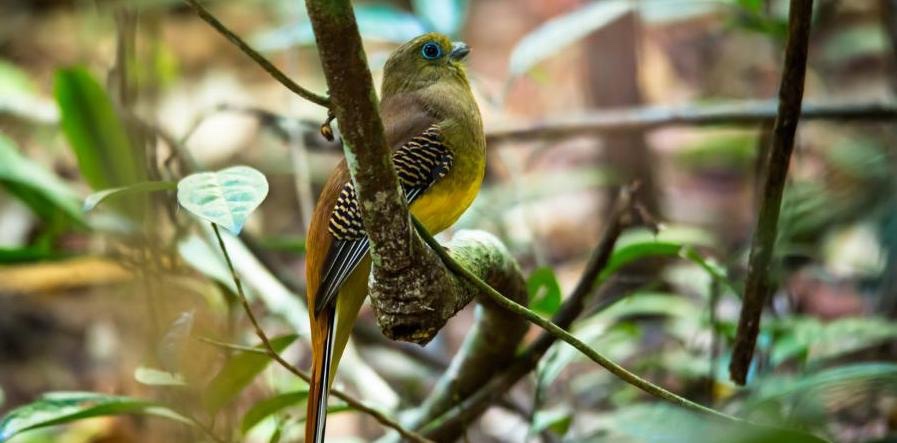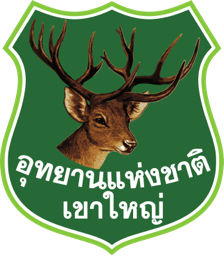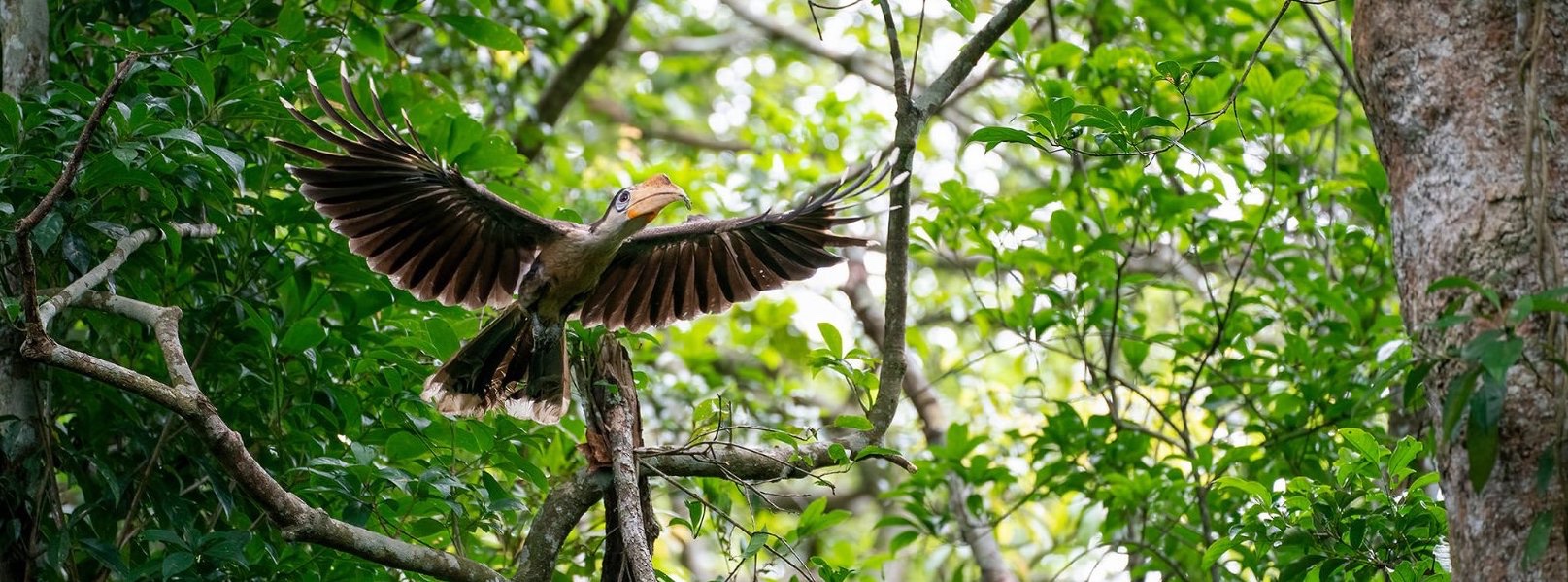
Birds
Khao Yai National Park is one of the best places for birdwatching in Thailand, with its large tree cover and plentiful forest resources. Surveys have found over 280 bird species, both resident and migratory. From the records of Nick Upton, Khao Yai has been designated an Important Bird Area (IBA).
Interesting birds include the four hornbill varieties of Oriental Pied Hornbill, Great Hornbill, Wreathed Hornbill, Austen’s Brown Hornbill, Red-breasted Parakeet, Banded Kingfisher, Long-tailed Broadbill, Green Magpie and Orange breasted trogon.
Birdwatching at Khao Yai is popular with birders from around the world with the possibility of observing colourful species up close. Birdwatching locations include the Tourist Centers at Pha Kluay Mai, Nong Phakchi and Khao Kheow.
Hornbill
Large birds in the Bucerotidae family, there are 52 species worldwide in the tropical regions of Africa and Asia. Thailand is home to 13 species. of which Khao Yai National Park has 4: Oriental Pied Hornbill, Great Hornbill, Wreathed Hornbill and Austen’s Brown Hornbill.
Oriental Pied Hornbill
Scientific Name : Anthracoceros albirostris
The Oriental Pied is one of 4 hornbill speciesthe most common in Khao Yai National Park. It has a black body and a white lower throat and belly. There is white skin around its eyes and beak. The beak and casque, a large bulky structure on the top of the bill, are ivory to pale yellow. In flight, each bird displays black wings with a white edge and a tail with white at the tip. The male has black marks at the front of its casque, while the female’s casque is smaller than the male’s. The casque and the beak are tipped with black, while the base of the beak is black and reddish-brown. The Thai name “Kek” comes from its distinctive call.
| Male | Female |
Where to find them
Both evergreen and deciduous forest, from the plains to 1,400m.
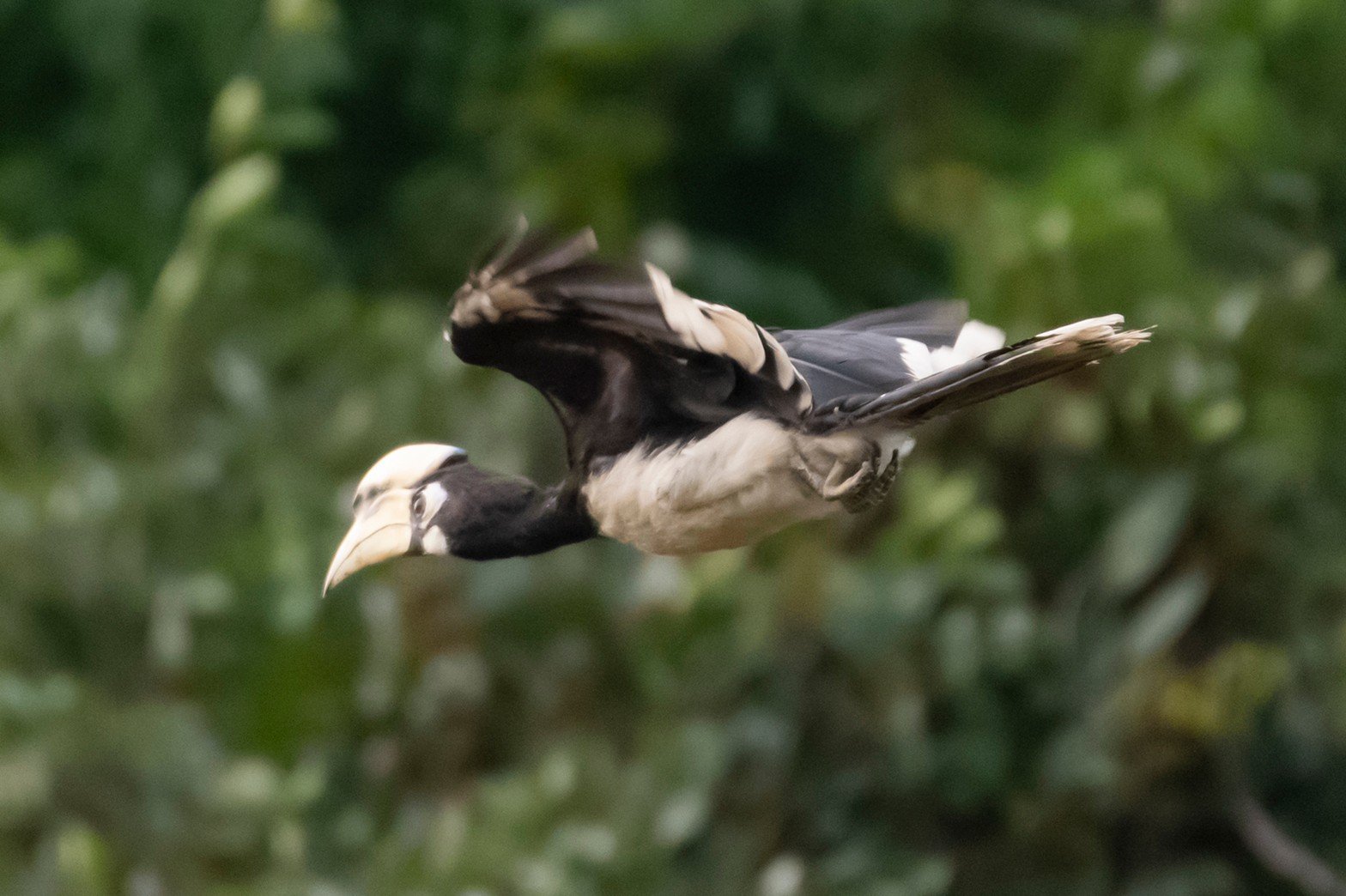

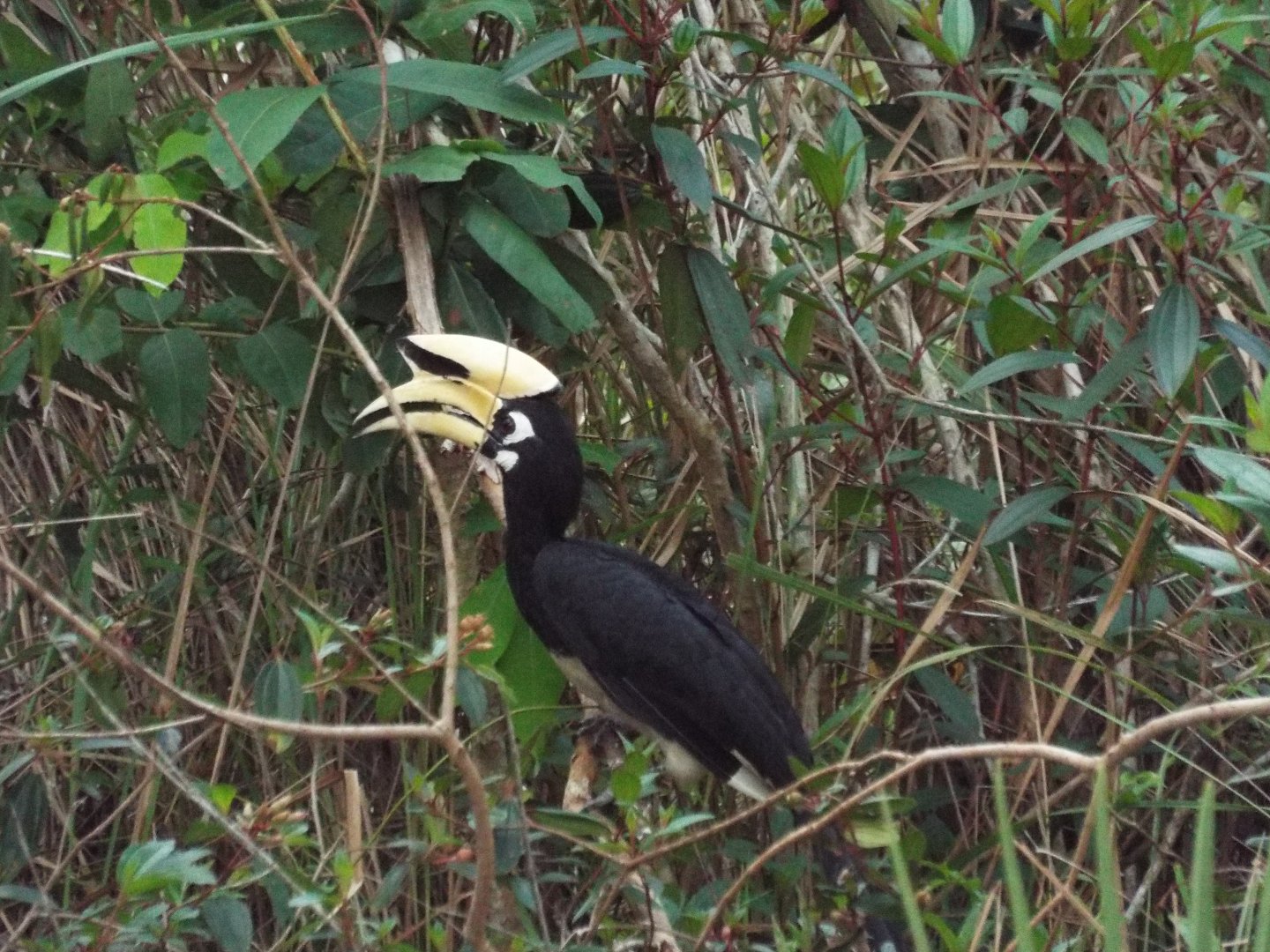
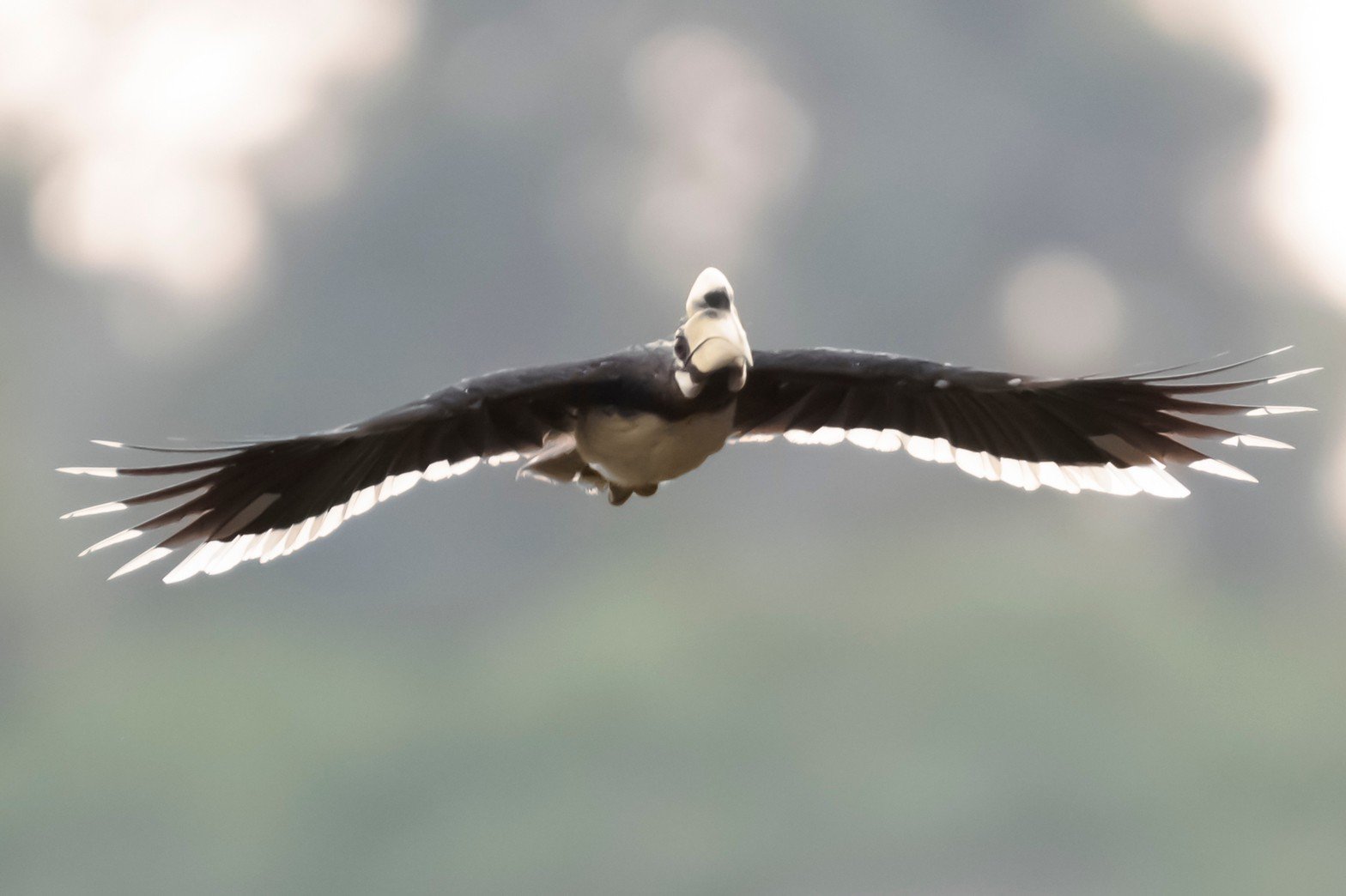
Great hornbill
Scientific Name : Buceros bicornis
A large hornbill frequently seen in Khao Yai, the beak and casque are large and yellow. The face is black, and the throat white or yellowish white. The breast and upper body are black. The male has red eyes and a casque that is black at the front, while the female’s eyes are white surrounded by red and her casque does not have any black. The male has a casque is black at the front and red eyes, while the female’s casque does not have any black, and she has white eyes, surrounded by red. The loud call “KOK” gives it its common Thai name.
| Male | Female |
Where to find them
Wet or dry forests, dry evergreen forest, montane forest or deciduous forest.

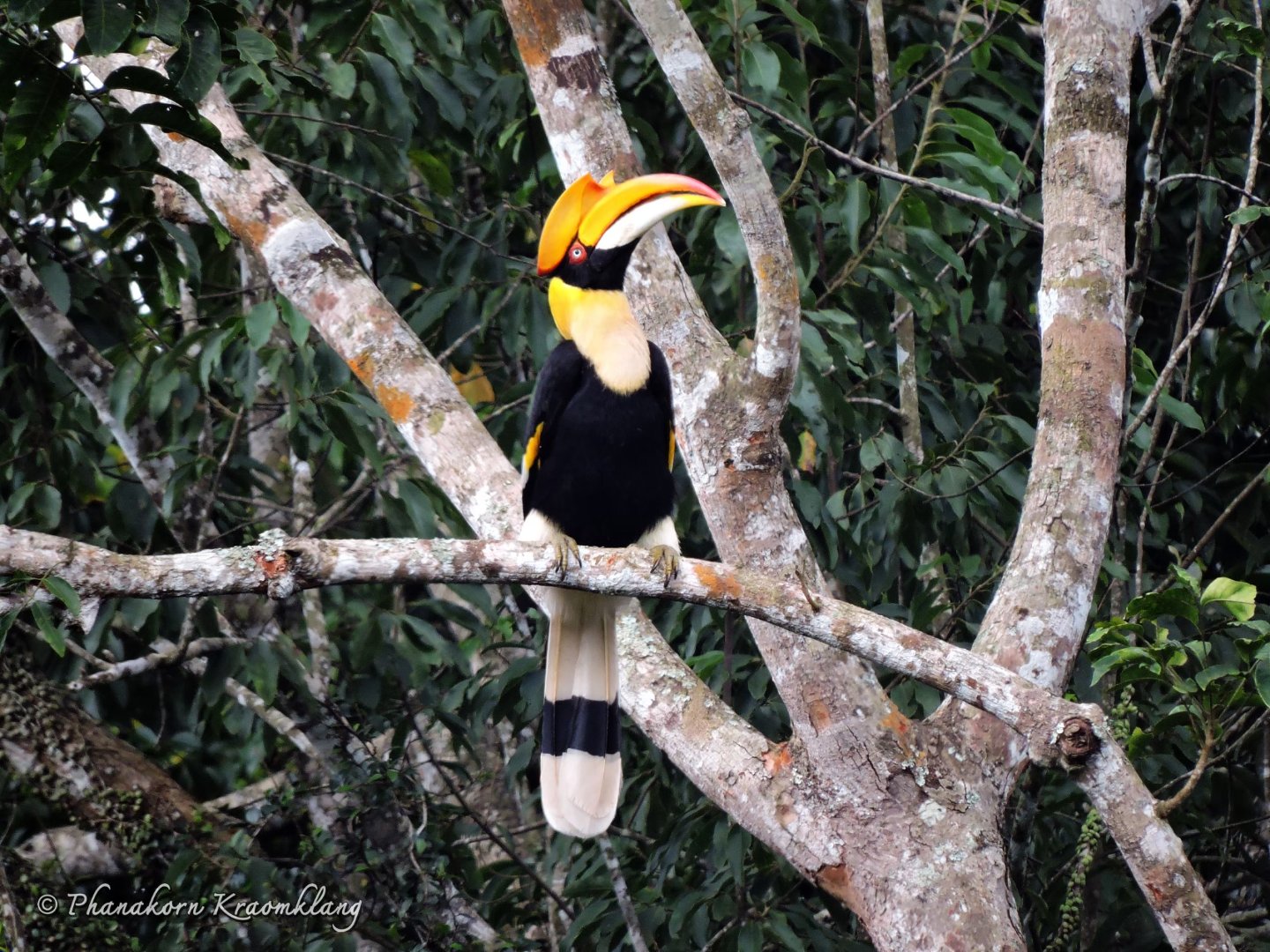
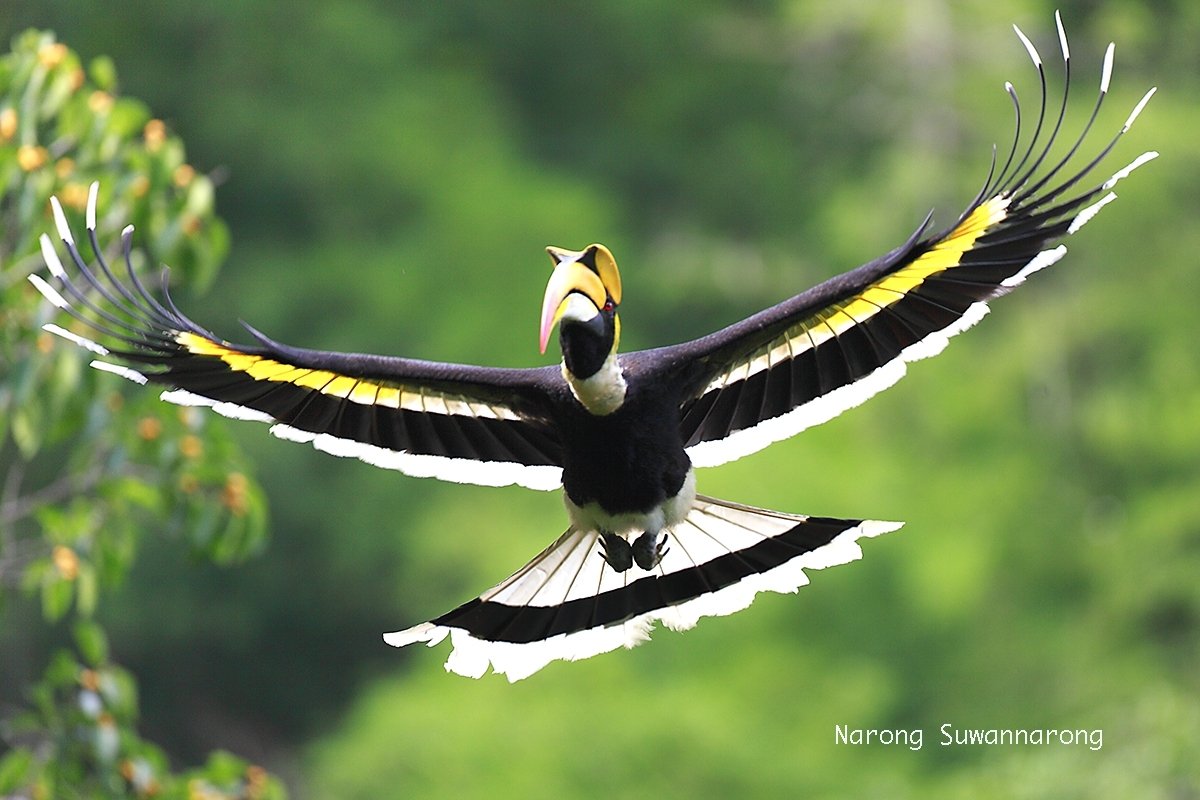
Wreathed Hornbill
Scientific Name : Rhyticeros undulatus
The Wreathed hornbill is smaller than the oriental pied hornbill and is rather rare. It has a small ridged casque on top of the beak, while there are also ridges at the base of the beak. The two sexes are different. The male has a yellow pouch with a black band across it, and the female has a blue pouch with a black body and white tail. The call is a distinctive “uk-uk-uk.”
 | 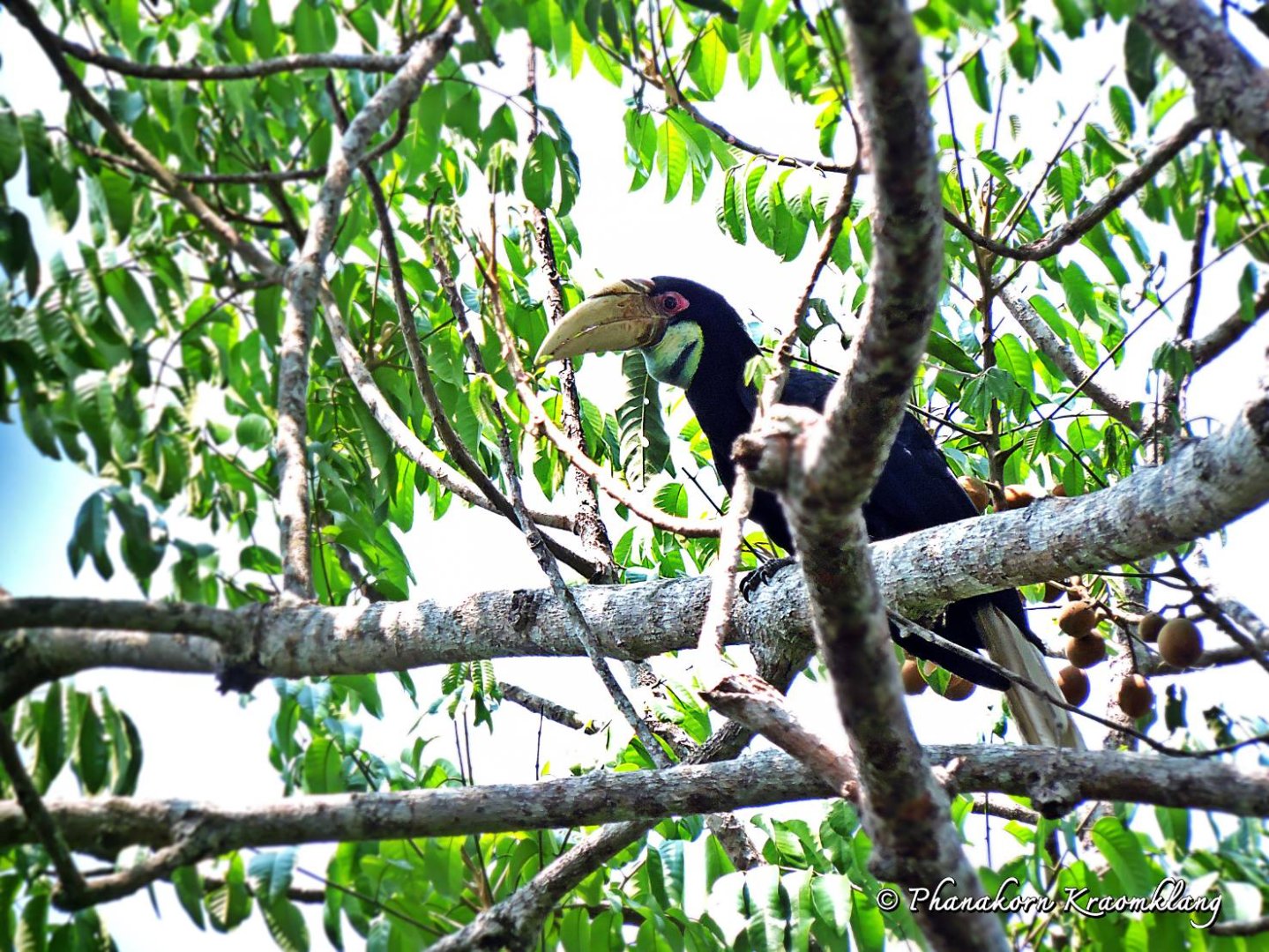 |
| Male | Female |
Where to find them
In the rain forest, from the plans to 1,800m above sea level, but may also be seen in deciduous forest
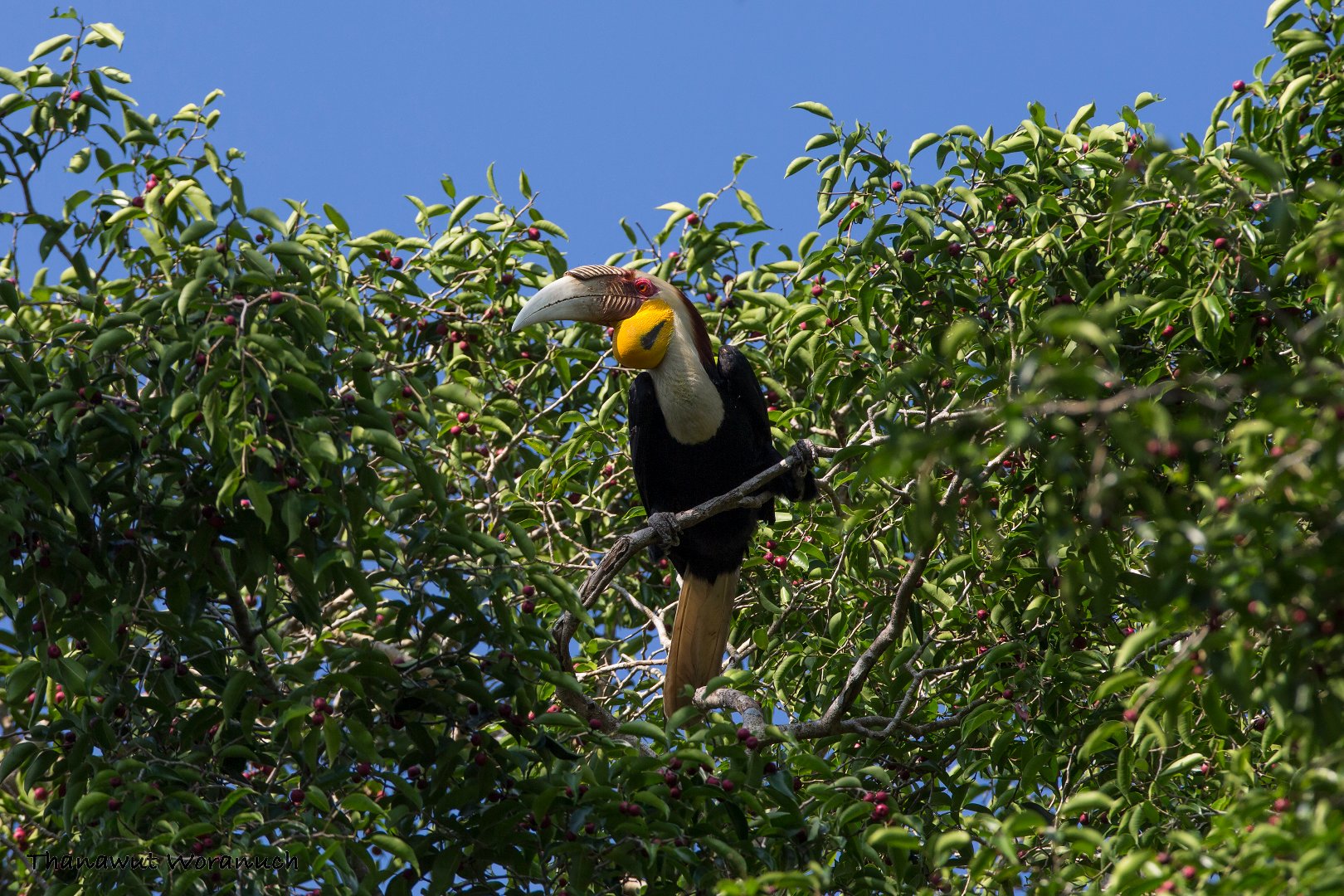


Austen's Brown Hornbill
Scientific Name : Anorrhinus austeni
This is the rarest hornbill in Khao Yai National Park. It has a small casque, and both casque and beak are a yellow-brown. Skin around the eyes is blue, the upper body is brown, and the lower body orange-brown. The tips of the wings have white markings, and the tail is brown tipped with white. The male’s throat and chest is white, while the female’s is brown. The call is a piercing “waew-waew” sound and they congregate in small flocks.
| Male | Female |
Where to find them
Under the forest canopy of both rain forest and deciduous forest.


Red-breasted Parakeet
Scientific Name : Psittacula alexandri
A member of the parrot family with a grey head and a black strip between the two eyes. Under the beak is a thick black strip. The body is green with a pinkish-red breast and its underbelly is light blue-green. The male’s beak is bright red at the top and black at the bottom, while the female has a black beak. Its voice is a piercing shriek, but with a lot of variation. They can be found in deciduous forest and open forest, on farmland, orchards and public parks. Their core diet is seeds, seedpods, fruits and shoots, and they flock together in large numbers.
 | 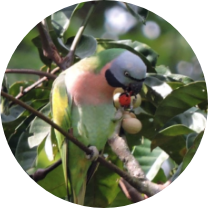 |
| Male | Female |
Where to find them
From the plains to an elevation of 1,220m, at Lamtakong Campsite and the old golf course
Banded Kingfisher
Scientific Name : Lacedo pulchella
This bird is rather rare in Khao Yai National Park. It has a bright red beak and a long tail. The male has a dark brown head. The breast and belly are a reddish-yellowish brown. Throat and middle underbelly are white, while the crown and back have black and blue banding. The female’s head, back and tail are black-and-rufous banded, with the underparts white, with some black parts on the chest and flanks. They prefer the forest to water and will perch motionless while looking for caterpillars, insects or even small reptiles.
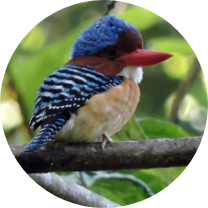 | 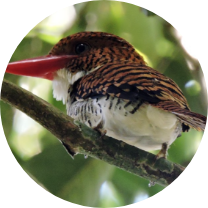 |
| Male | Female |
Where to find them
Rain forest and deciduous forest, from the ground to 1,000m.
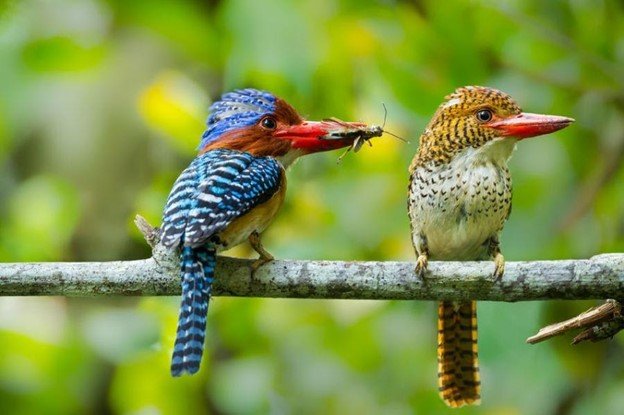
Long-tailed Broadbill
Scientific Name : Lacedo pulchella
With a black head that looks like a crash helmet, it looks cute. There are yellow marks at the back of its neck. The face and throat are yellow, and the beak is yellow-green. The wing feathers are green with a white strip which is visible in flight. The tail is bright blue. As a resident bird of Khao Yai, it is quite easy to find.
Where to find them
Pha Kluay Mai Campsite and on many Nature Trails at Khao Yai National Park
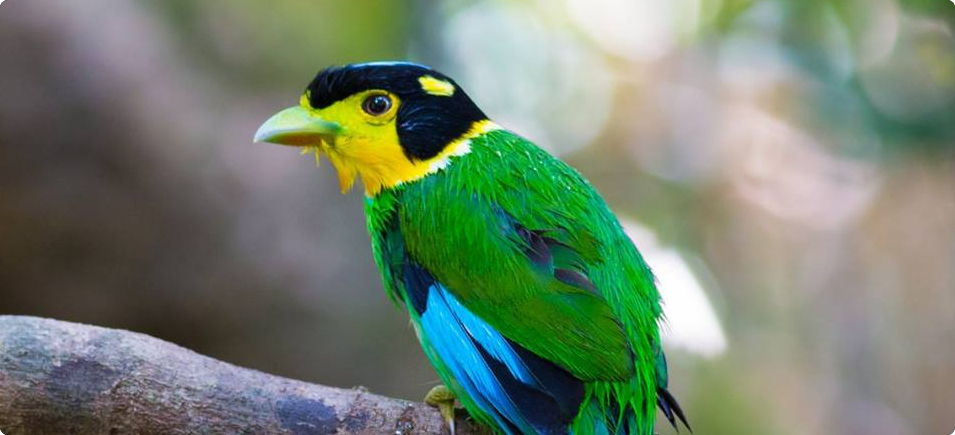
Green Magpie
The green magpie is a corvid with a bright red beak, red around the eyes and a black stripe that looks like a mask. On the crown it is a green-yellow. Upper parts of the body are green and lower parts a paler green. Wings at the shoulder are green and the wing tips are a dark red. Inside the feathers mid-wing is a band of alternating black and white. The legs are a bright red. Under the tail is black alternated with white, and the tip of the tail is white
Where to find them
Mor Boonsong Camp and all around Khao Yai National Park.
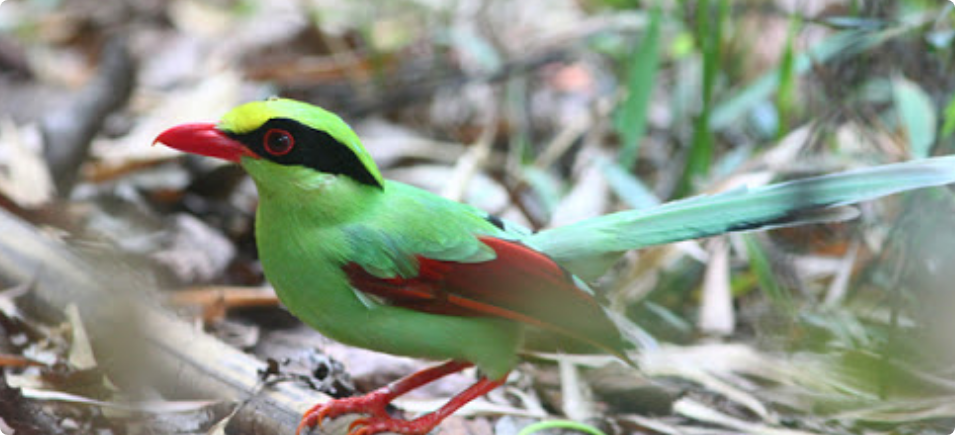
Orange-breasted Trogon
This bird has a distinctive orange chest which becomes yellow at the tail. The head is a green-yellow colour. The back and the top tail feathers are a reddish-brown. The male has alternating white and black on its wings, while for the female it is light-brown and black. The female’s head is more of a brown-green. The orange-breasted trogon is the most common trogon in Thailand and prefers high perches.
Where to find them
Mor Boonsong Camp


